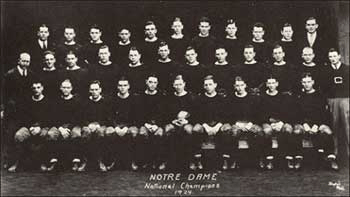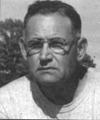A Season in Time: Notre Dame 1924
Reference: Rockne of Notre Dame: The Making of a Football Legend, Ray Robinson
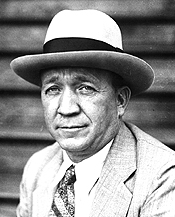
Knute Rockne
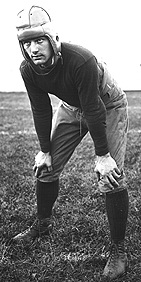
Harry Stuhldreher
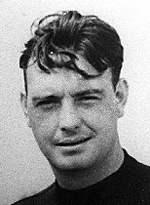
Jim Crowley |
In March 1924, 36-year-old Knute Rockne signed a 10-year contract to continue to coach football at Notre Dame at a salary of $10,000 per year - a considerable sum at that time.
- Disgruntled with restrictions Father Matthew Walsh, president of the small Indiana college, imposed on his freedom to make the annual schedule, Rockne had leaked to his friends in the press that schools like Iowa and Southern California had expressed interest in having him coach their teams.
- The contract provided Knute with a business manager to take over many administrative duties as he entered his seventh season as Notre Dame coach.
Preparing for the 1924 campaign, Rockne and Notre Dame fans everywhere expected great things from the all-senior backfield who, before the season ended, would be known nationally as "The Four Horsemen." None of the four had impressed the coach as freshmen. "I thought that they could be whipped into a combination of average players. Not much more than that at the time. That's all the dream I had of them then."
- QB Harry Stuhldreher, from Massillon OH, followed his older brother to South Bend. Despite standing just 5'7" and weighing 150, Harry was a fearless blocker and accomplished defensive back. As a sophomore, he beat out the older but slower Frank Thomas (future coach of Alabama). Harry had already made All-American twice. (Players were not eligible for varsity competition until sophomore year.)
- 157 lb HB Jim Crowley hailed from Green Bay WI where he had learned football from none other than Packer player-coach Curly Lambeau. Alumni in the area encouraged him to play for Notre Dame because Rockne would exploit Jim's passing skill. Crowley had made some All-American squads as a junior. On the other hand, he was the least capable student of the quartet.
- HB Don Miller, another 157-pounder, had not even started on his high school team in Defiance OH. Rockne was surprised he even came out for football. Don's three older brothers had played for Notre Dame. Although we think of backfield excellence in terms of yardage and touchdowns, Miller, like his mates, played defense well enough to keep his spot in the lineup.
- FB Elmer Layden, a high school star at Davenport IA where he was particularly known for his punting, was slightly the heaviest of the four at 161. He needed little persuasion to come to Notre Dame because his father was a big Irish fan. In addition, his coach at Davenport, Walter Halas, served as one of Rockne's talent scouts as well as Notre Dame basketball and baseball coach. Elmer had been the last of the four to assume a starting position, replacing Paul Castner when the latter broke his hip midway through the '22 season.
Until 1934, the rules discouraged forward passing. The passer had to be at least 5y behind the line of scrimmage. Further, a team was penalized 5y for attempting a second forward pass during any one series of downs. Also, the ball was much more rounded like a basketball and therefore harder to throw any distance.
|
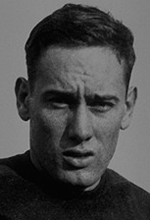
Don Miller

Elmer Layden |
 C Adam Walsh
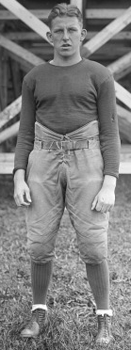
T Edgar "Rip" Miller
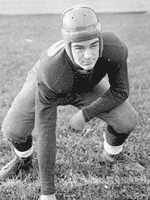
G John Weibel |
Rockne's linemen weren't bad either and would earn a nickname of their own, "The Seven Mules."
- 6-0 190 Captain Adam Walsh manned the center position. Proving that Rockne's recruiting network reached coast-to-coast, a Los Angeles lawyer-alumnus persuaded Adam, or, more accurately, Adam's mother, that he should travel across country to a Catholic college rather than attend nearby Stanford or USC. When the homesick freshman suffered a broken arm and dislocated collar bone practicing against the varsity, he felt severe misgivings about his choice of college. But Rockne persuaded the young man that the injury was only a temporary setback and that he would have a bright future. By his junior year, Walsh was the leader of the front wall, all the stronger for the adversity he had overcome.
- LE Chuck Collins (6-0 177), RG Noble Kizer (5-8 165) and tackles Joe Bach (5-11 186) and Edgar "Rip" Miller also returned from the 1923 starting unit.
- Two second teamers from '23 filled out the starting seven: RE Ed Hunsinger (5-11 172) and LG John Weibel (5-9 165).
Notre Dame opened with two "creampuffs" at Cartier Field, recently enlarged to 22,000. On October 4, the Micks (as Notre Dame was commonly called in those days) romped over Lombard College 40-0. ( Lombard was founded in Galesburg IL in 1853 by the Universalist Church. The Great Depression forced its closing in 1930. Its most notable alumnus was Carl Sandburg.)
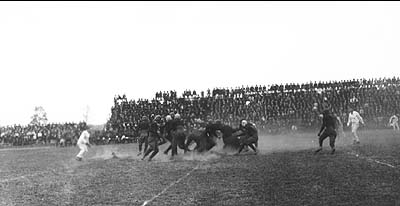
Game at Cartier Field, early 1920s The following Saturday, Notre Dame beat up Wabash College (Crawfordsville IN) 34-0 "under a blazing sun."
- For the second week in a row, the second string started. The Little Giants battled gamely in the first half but wore down in the last two periods.
- The rout could have been worse, but Notre Dame had two touchdowns called back. Crowley had a 45y jaunt negated by holding, and a 55y punt return by QB Frank Reese (5-10 152) in the final quarter was cancelled by offside.
- Crowley ripped off another 45y touchdown that counted. Connell replaced the injured Miller in the first team backfield and broke several nice runs. He obviously could have started for most teams in the nation.
The decks were cleared for the first test of the season, the annual game with Army to be played in the Polo Grounds in Manhattan.
|

E Knute Rockne 1913
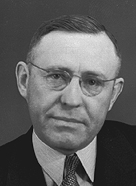
Coach Jess Harper
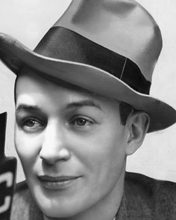
Ted Husing |
Entering the 1924 season, Notre Dame and Army had played ten times.
- The first and, to this day, most famous clash had occurred in 1913 when the small Catholic school had invaded West Point and embarrassed the mighty Cadets 35-13. (Notre Dame was so unknown that The New York Times report on the game put the college in South Bend, Illinois.) A 145-lb E named Knute Rockne teamed with QB Gus Dorais to pass the Army team silly to the tune of 13-for-17 for 243y. Jess Harper's crew followed that contest with victories at Penn State and Texas to finish 7-0.
- With the passing duo graduated - Rockne having become a football assistant, head track coach, and chemistry professor - Army gained revenge the following season 20-7.
- Notre Dame prevailed in 1915 7-0 but lost 30-10 the next year.
- The Micks won the next four: 7-2 in 1917, 12-9 in 1919 (skipping 1918 because of WW I), 27-17 in 1920, and 28-0 in 1921. The Cadets achieved a 0-0 tie in 1922.
- 1923 marked the first game in the series not played at West Point. Notre Dame won 13-0 at Ebbets Field in Brooklyn.
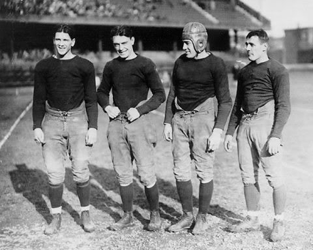
Four Horsemen in picture believed to have been taken
at Ebbets Field before the 1923 Army game
The 1924 contest was scheduled for the Polo Grounds, which had just hosted the World Series between the New York Giants and the Washington Senators. The game would be broadcast by both of the premiere announcers of the day, Graham McNamee of WEAF and Ted Husing of WJZ.
Ray Robinson describes the Notre Dame pre-game drills.
Rockne trotted out his entire squad - six full teams - onto a gridiron that was bathed in the shadows of an overcast fall afternoon. Then, with a precision that characterized all Rockne-trained teams, the sixty-six players ran the length of the field, practicing formations. The punters boomed their punts down the field, and pass receivers crisscrossed under long aerials. All the while, Rockne, under his brown fedora, kneeled on the sidelines, pointing, exhorting, shouting. For those who had never seen a full-scale Rockne production before, it was a sight to see - and Rockne knew it. Even the fourteen hundred Cadets, marching in style, straight, and gray-clad, fifteen minutes before the start of the game, couldn't compare with the display of Notre Dame might.

Football game at the Polo Grounds, New York |

QB Gus Dorais
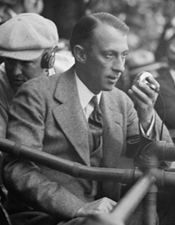 Graham Mcnamee |
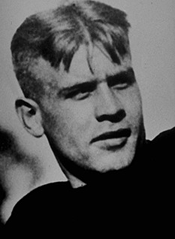 "Light Horse" Harry Wilson
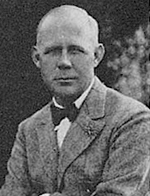
Grantland Rice |
- Unbelievably, Rockne sent out the second string for the opening kickoff for the third straight game. Army ripped off three straight first downs before bogging down. Finally, a mighty cheer erupted from the 55,000 fans as the Mick first unit took the field.
- Early in Q2, a Cadet punt went out of bounds on the Notre Dame 20. On the first play, Crowley peeled off 15y. Then Layden got 6 more before Miller added 10. A pass from Stuhldreher to Crowley gained 12. Then Miller rambled 20y around RE before "Light Horse" Harry Wilson, a transfer from Penn State, made a flying tackle on the 10 to prevent a touchdown. On 3rd-and-5 "Layden went 10y across the [goal] line as if he had just been fired from the black mouth of a Howitzer." During the period, Notre Dame made 8 first downs to none for Army.
Wilson was a prime example of a practice that caused many schools to refuse to play the Cadets. Harry had already played three years on the Penn State varsity, earning All-America honors in 1923. Then he accepted an appointment to West Point and, under the rule exempting the service academies from the three-year limit for varsity participation in a sport, competed three more seasons for Army. This rule was not changed until shortly after World War II.
- After the half, Layden intercepted a pass on his 48 to set up another touchdown march. Crowley circled RE for 15 where the ubiquitous Wilson made another saving tackle. C Walsh, who wore a cast on his fractured hand, was hurt on the play but soon returned. (It would be determined later that Adam had broken a bone in the other hand!) Miller got 7 and Layden 8. Then the D finally stopped Miller in his tracks. But it proved to be a momentary triumph as Crowley swung around LE, cut in, and crashed into the end zone.
- Notre Dame threatened two other times. Yeomans ended the first drive by intercepting on his own 5 and running it out 35y. On the next march, Miller and Layden took the ball 42y to the 14 where the soldiers stopped four plunges on the nine.
- With the 13-0 score not reflecting the extent to which Notre Dame had dominated the game, the West Pointers finally made some noise. Late in Q3, Wilson, "raging like a wild man, suddenly shot through a tackle opening to run 34y to midfield." But Notre Dame held, and Wood punted out of bounds on the 5. Layden punted from the end zone, his punt soaring to the 35 where Yeomans called for a "free catch." But a tackler spilled him to earn a 15y penalty to the 20. Three plays gained 8, setting up Army's only score of the afternoon. QB Harding took the snap and faked a handoff to Wood diving into the line. After waiting a moment, Harding tucked the ball under his arm and tore around RE untouched to paydirt. "He was over the line before the Westerners knew what had taken place." The PAT made the score 13-7.
The extra point try had been introduced only in 1922. The ball was placed on the 5y line and the offensive team could try a placekick or dropkick or run or pass. Until 1927, the goal posts were on the goal line.
- The rest of the contest went back and forth with no further scoring. Army did unleash one drive that ended in the broken hands of Walsh, who intercepted.
Among the large number of reporters covering the game was the New York Herald Tribune's Grantland Rice, "a charter member of the 'gee whiz' fraternity of sports journalists" (to quote Ray Robinson again) and a friend of Knute Rockne. America's most famous sportswriter started his article on the Army game with perhaps the most famous paragraph in the history of sports reporting.
Outlined against a blue-gray October sky, the Four Horsemen rode again. In dramatic lore their names are Death, Destruction, Pestilence, and Famine. But those are aliases. Their real names are: Stuhldreher, Crowley, Miller and Layden. They formed the crest of the South Bend cyclone before which another fighting Army team was swept over the precipice at the Polo Grounds this afternoon as 55,000 spectators peered down upon the bewildering panorama spread out upon the green plain below.
Rice apparently got the idea for his lead during halftime of the game from George Strickler, Rockne's student publicity aide (and later sports editor of the Chicago Tribune). Strickler had just seen the Rudolph Valentino movie, The Four Horsemen of the Apocalypse. When talking to another writer about the team, George mentioned that the Notre Dame backs were like the four horsemen of the film, a remark that Grantland overheard.
Strickler followed up on Rice's story to insure the backfield's place in history. Back in South Bend, he posed the four players in their uniforms on horseback. Strickler sent the photo to the wire services who relayed it to newspapers across the country, and a legend was born. By the following weekend, papers from coast-to-coast referred to the Notre Dame backfield as "The Four Horsemen."
Video of the 1924 Notre Dame-Army game
Notre Dame had cleared a large hurdle on its schedule, handing Army what would turn out to be its only defeat of the season, but many more challenges loomed, starting the very next week with Princeton.
|

"Sleepy" Jim Crowley
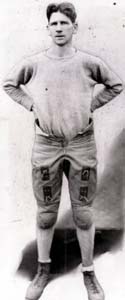
Elmer Layden
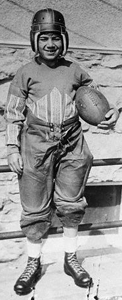
Billy Rockne in 1929
|
Rockne's 3-0 squad returned to the East to take on Princeton, a perennial football power.
- Associated Press: Knute Rockne's Notre Dame 'Comet' flashed through Palmer stadium this afternoon and crushed Princeton for the second successive year. A colorful crowd of 45,000 sat thrilled as the cyclonic Hoosier backfield swept through the Tiger defenses and won 12 to 0.
- For the second week in a row, the score did not reflect Notre Dame's dominance against a heavier foe. Had the visitors taken advantage of every scoring opportunity, the margin might have exceeded the 25-2 victory of 1923, Notre Dame's first against one of the so-called "Big Three" (Yale, Harvard, and Princeton). The first down tally of 10-3 gave a better measure of the disparity between the teams.
- Rockne continued his habit of starting the entire second team. As in the Army game, the first period ended 0-0. The real starters entered for Q2. After a punt to the Notre Dame 40, Stuhldreher passed 20y to Miller. Layden and Miller gained 15 on three plays before Crowley tore through the line for 12y and a touchdown. Crowley's place kick for the PAT was blocked.
- The Horsemen rode the Mules 63y in Q4. Crowley made 13 on the same "split play" (whatever that means) on which he had scored the first touchdown. Layden ran three times to the Tiger 25. On fourth down, Stuhldreher passed to Crowley on the 10 and he bulled into the end zone with two defenders clinging to his waist. Again the extra point kick was blocked.
- In between the scoring marches, Crowley fumbled on the Princeton 10 in Q2. In Q3, two 15y penalties for holding, the first negating a Miller touchdown, gutted another drive. And in the last 15 minutes, Princeton held on downs on its own 5.
- Walsh contented himself with exhorting his mates from the sidelines.
Next came a home game on November 1 against Georgia Tech under Coach William Alexander, who had succeeded John Heisman for the 1920 season. Notre Dame had made a tense visit to Atlanta two years earlier.
- Adding to the excitement of the Micks coming to the Georgia capital in 1922 were overtones of anti-Catholicism at a time when the Ku Klux Klan was making inroads again. Some at Notre Dame had urged Rockne not to schedule the game to spare the mostly Catholic squad from bigotry.
- The coach had decided not to make the expected hostile reception a rallying point for the team. Instead, he chose a different ploy to fire them up. In the locker room before the game, he pulled a rumpled telegram out of his pocket and read: "Please win this game for my daddy. It's very important to him." Rockne then explained that the request came from his 6-year-old son Billy who was very ill in the hospital. Suitably inspired, Notre Dame inflicted a 13-3 defeat on the Golden Tornado (as Tech was commonly called then).
- When the victors pulled into the South Bend train station, there to welcome them was little Billy. As Crowley remarked later: "You never saw a healthier looking kid in your life. I don't think Billy had been in a hospital since the day he was born."
Rockne wouldn't need chicanery to defeat Tech for Homecoming in 1924 for the 200th victory in school history.
- As usual, the second string played the first period. But this time the opponent kicked a field goal, "a perfect 35y dropkick by I. A. Williams," on its first possession after a 40y run by Parrish. Notre Dame trailed for the first time all season. Later, an offside penalty (which today would be called "illegal procedure") wiped out a 20y run by Connell. HB Max Houser (6-1 170) hit several passes for 33y to the Tech 3. But after another offside penalty set them back, Notre Dame turned the ball over on downs entering Q2.
Some of Notre Dame's offsides penalties may have resulted from a hallmark of Rockne's team that other coaches complained about. Employing the famed "Notre Dame shift," all four backs in a "box formation" moved in unison right or left just before the snap. This gave the Irish a split second head start in the direction of the shift as the play began. In 1927, the rules committee passed a regulation that continues to this day whereby backs in motion must be set for one second before the ball is centered.
- The veterans, including Captain Walsh and his two broken hands, took the field "amidst the plaudits of the grandstand." Miller immediately zipped 30y. Two more end runs moved the ball to the 13. On fourth-and-seven Crowley passed to Miller for a touchdown. Crowley's place kick made the score 7-3.
- Holding Tech and receiving the punt near midfield, Notre Dame struck again. Miller circled LE for 25 on the first play. Crowley gained 15 and Layden 11 through center to the one-foot line. Layden did the honors on the next play. Crowley again booted the point to make the scoreboard read 14-3.
- After Tech unwisely tried to run the kickoff out and was moved back to its 1 by penalty, husky FB Douglas Wycoff punted to the 40, too good a field position to give the potent Irish O. With Rockne mixing his first two units, FB John Roach (6-0 and only 139) scampered around RE for 35y on his first run of the season. Then he went through the line for a touchdown. Reese drop-kicked the point.
- Leading by 18, Rockne sent most of the second squad out to start the final half. Starting from the Notre Dame 21 after the kickoff, the hybrid eleven drove deep into Tech territory only to lose a fumble on the 14. After an exchange of punts, Notre Dame found itself on the enemy 30. Backup FB Bernard Livergood (5-10 175) ripped through LT to the 8. But the promising drive ended in disappointment. After Connell lost 2, an incomplete pass turned the ball over to Tech under the rules of the day.
- The Georgians finally generated some O, moving the ball to its 43. But Houser intercepted Wycoff's pass on the Notre Dame 35. After Notre Dame had to punt, Tech couldn't move either, and QB Gene "Red" Edwards (6-1 160) lost Wycoff's punt at midfield as Q3 ended.
- Tech couldn't sustain a drive and punted into the end zone. In short order, the Rockmen moved the ball across midfield to the 37. From there, Connell broke through for 15. Two more line plunges put the ball on the 5. Livergood went through C for a touchdown, but it was disallowed because of another offsides penalty. No problem. Eddie Scharer (5-8 145), the fourth QB Rockne had employed during the season, threw a 10y touchdown pass to Roach, who also place-kicked the PAT. Notre Dame 28 Tech 3.
- After another exchange of punts, E Joe Rigall (5-9 147) intercepted Wycoff's pass in Tech territory. A succession of line bucks and end runs advanced the pigskin to the 1, from where Livergood leaped over the top for the touchdown. This time, Reese failed to convert.
- Late in the game, wiith many third and fourth stringers on the field for Notre Dame, Wycoff picked up a punt that had been juggled by his teammate and made a "sensational run" from midfield to inside the 1. As the Golden Tornadoes huddled, the final gun sounded, leaving the score 34-3.
- Rockne tried to keep his stars' egos in check by reminding them that the Seven Mules were indispensable to their success, that, in fact, the backups could gain yardage behind the fabulous line as well. He used the Tech game to reinforce his point as the Four Horsemen played very little as a unit in the contest.
 Sitting pretty at 5 up, 0 down, Notre Dame looked forward to its four remaining foes: Wisconsin, Nebraska, Northwestern, and Carnegie Tech with only Nebraska in South Bend.
|
Notre Dame was 0-3-1 against Wisconsin as they visited Camp Randall Stadium in Madison on November 8. In fact, Notre Dame had scored nary a point against the Big Ten school.
 Camp Randall Stadium built in 1915 The second half continued Notre Dame's dominance.
- Miller continued his rampage, rambling 55y around RE to the 25. (One wire service story credits the run to Crowley, but two play-by-play lists say Miller.) Then Don tried the opposite side for 5, then 12 for a first down. Three plays later, Layden scored from the 2. Miller was allowed to kick the point to make it 24-3. Once again, the play-by-play has Wisconsin kicking off.
- Playing the game of his life, which is saying a lot for one so successful, Miller intercepted a pass and returned it to the 16. Crowley then rumbled around LE to paydirt. Layden took his turn kicking the goal: 31-3. Guess what? Wisconsin kicked off as "Rockne substituted freely." The second teamers couldn't move, but neither could the home team.
- In the final period, "Wisconsin tried the passing game with little luck ... The same was true of Notre Dame's aerial play. In the latter part of the quarter the teams returned to old style football and repeated line smashes and end runs." Finally, Harmon intercepted Harmon: Notre Dame C Joe Harmon (5-9 165) snared a pass from Doyle Harmon on the 23 to set up the final tally. FB Tom Hearndon (5-9 156) garnered a first down on two runs. Several plays later, Roach scored from the 12, and Reese kicked the point to make the final score 38-3.
Afterwards, "Roundy" Coughlin, longtime sports reporter for the Wisconsin State Journal in Madison, praised the visiting team profusely.
- I can come out and say I saw the greatest football team I ever saw assembled coached to the minute, the regulars, subs and all. It was worth going miles to see them in action. The packed stands with Wisconsin even in defeat got their money's worth as Notre Dame showed you a football machine that might never be assembled together by one school.
- Wisconsin ought to go out and buy that third Notre Dame football team.
- He singled out the Notre Dame leader: Captain Adam Walsh is without a doubt one of the three greatest centers that ever played football in its history. ... If his hands were not hurt and fit what a wrecking machine this 174 pounds would be. ... a deadly tackler on either side of the line and down on every punt.
- Stuhldreher no doubt is all that the papers been saying of him. Did you see this bird come back on punts, did you ever see a man run a team in such a fashion as this kid? They seemed to get better every play and did you see him block in there for them half backs. ... Did you see him pass and cover that ball up in his dashes?
- Rockne is playing 1928 football and others are playing 1924 football, he is about four years ahead of the boys.
Harry Stuhldreher would coach Wisconsin from 1936-1948, including the 1942 team that finished 8-1-1 with the tie against Notre Dame.
News of Notre Dame's brilliant performance in its first six games spread all the way to the West Coast, where Rose Bowl officials were rumored to be keeping an eye on Rockne's club as a worthy foe for the West Coast champion on January 1.
|


Jim Crowley

Roundy Coughlin
|
But the coach didn't want to overlook the next opponent, Nebraska, another school that his alma mater had not defeated.
- Before the Wisconsin game, Rock learned that Nebraska players as well as coaches, enjoying an off week, would scout Notre Dame in person.
- The Master of Psychology seized the opportunity to bait the Cornhuskers into helping his team get ready for them. Suspecting that the players from Lincoln were confident of their superiority, he invited thems to mingle with his boys after the game in Madison.
- Sure enough, the Cornhuskers told the Notre Dame players that Wisconsin wasn't a very good team and promised a different outcome the next Saturday. The effect was every bit as telling as any Rockne speech in eliminating any overconfidence Notre Dame might bring to the game in South Bend.
Nebraska of the Missouri Valley Conference had been an annual opponent since 1915.
- Nebraska won two of the first four in the series (20-19 in '15 and 7-0 in '17) with one tie (0-0 in '18). The 1916 clash went to Notre Dame 20-0.
- Notre Dame won the next three: 14-9 in '19, 16-7 in '20, and 7-0 in '21.
- The last two seasons, though, the Cornhuskers had inflicted bitter defeats on Rockne. The 14-6 setback in the 1922 finale had spoiled Notre Dame's undefeated season and killed any possibility of a Rose Bowl trip. In addition, the crowd in Lincoln rivaled the one earlier that season in Atlanta for anti-Catholic bigotry. Then the 14-7 Cornhusker win in Lincoln in '23 hadn't been as close as the score indicates since Notre Dame didn't get on the scoreboard until late in Q4.
Now Rockne had Nebraska where he wanted them - before a record crowd of 26,000 at Cartier Field with a team that was considerably better than the elevens of the previous two seasons.
- During pregame warmups, a Nebraska coach asked Rockne, "Which one is the first team?" "Any of 'em," Knute replied. Somewhat superstitious, he asked his men to walk onto the field backwards before the kickoff.
- The coach saw no reason to change his pattern of starting his shock troops. However, the second unit finally gave up a touchdown in Q1 of a game. After several possessions, Cerney went back to put but fumbled the snap, Nebraska recovering on the 4. Rockne then sent in his first unit who held for two plunges before Myers scored on third down. The place kick missed, but you can imagine the Cornhusker players crowing, "We told you so." Little did they know their side would not score another point that afternoon while the Horsemen would play perhaps their best game as a unit.
- Starting from the 12 after the kickoff, the Fabulous Four took turns gaining yardage until the defense and several penalties stalled the drive near midfield. Layden punted into UN territory shortly before the first period ended.
- Early in Q2, a 25y pass Stuhldreher to Crowley moved the pigskin inside the 5 from where Stuhldreher claimed one of his few touchdowns of the season. Crowley's kick gave the home team a lead it would never relinquish.
- The Rockmen struck quickly later in the quarter, Miller hauling in a 50y pass from Harry and sprinting another 15 to the end zone. Another Crowley boot made the score 14-6 at the break.
- In Q3, Miller made a "sensational run" from the 36 to the 18, then started around LE before cutting up the middle for another 18 to the end zone. Crowley split the uprights again: 21-6. Later in the period, the Cornhuskers rose up and stopped Notre Dame on the 7. When the Catholics regained the ball deep in their territory after a punt, a series of smashes and end runs advanced the ball to the 30. Crowley broke away and behind "perfect interference" dashed 70y. He again added the PAT: 28-6.
- Notre Dame added a final touchdown late in Q4. Taking the ball at the 50, the backs "battered and pounded" until Layden crashed over the last stripe. Crowley finally missed a placement. The game ended with Notre Dame "utility men trying to complete forward passes" (a sign that Rockne was running up the score on his nemesis?).
- Knute exclaimed after the game: The most pleasant thing that's happened to me in years!
- The AP writer exulted: The Notre Dame machine, besides charging in its customary style, played as sensational forward passing game as ever seen in the West. Intricate forward passes completely stunned the Cornhuskers, who apparently mainly had attempted to perfect a defense to stop the charges of the Four Horsemen. Notre Dame completed 9 of 12 aerials.
Writers across the nation, not believing Rockne's juggernaut could be stopped, were already proclaiming them "national champions." Two examples:
- Paul Moore, sports columnist for the Corsicana (TX) Daily Sun.
The Notre Dame sensational eleven took another giant stride toward the championship of the United States Saturday when they humbled the Nebraska team. The Notre Dame team goes anywhere at any time to meet the leaders of any circuit. They do not pick easy teams but go after the best the country affords. They emerge victors and should not experience any difficulty in winning the championships of the country. If there are any teams which dispute the claims of the Notre Dame team, they can get action in a hurry by intimating that they desire a game.
- Al Warden of the Ogden (UT) Standard-Examiner.
Notre Dame's overwhelming defeat of Wisconsin gives it a high standing as far as Big Ten rating. Its defeat of Georgia Tech fixes its southern status. Winning from Princeton and the Army gives an eastern ranking. Notre Dame walloped Nebraska, the hope of the middle west, and now must defeat University of Southern California, the coast entry [presumably he means in the Rose Bowl] to dispute its championship claims.
Rockne, like any good coach, wanted no part of such thinking, insisting his team concentrate on the remaining two opponents, Northwestern and Carnegie Tech.
Reference: Rockne of Notre Dame: The Making of a Football Legend, Ray Robinson |
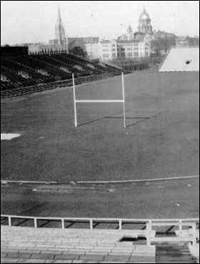
Cartier Field with the Golden Dome in background

Harry Stuhldreher

Elmer Layden
|
The next opponent for the 7-0 Irish was Northwestern in Chicago on November 22.
- The game would be the first played at 45,000-seat Grant Park Stadium which, a year later, would be rechristened Soldier Field.
- To Notre Dame fans, the Methodists in Evanston IL looked down their noses at the Catholics from South Bend. Despite the Wildcats' losses to Purdue, Michigan, and Chicago, Rockne had no doubt Northwestern would give its best effort of the season.
- Adding to his concern were daily rains in Chicago that guaranteed a muddy field to slow his swift warriors on Saturday.
|
Dedication game at Grant Park Stadium (later Soldier Field)
|
|
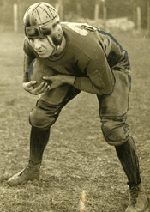
Ralph Baker, Northwestern All-American |
Northwestern did the best job all season of holding "Coach Rockne's famous backfield" to small gains although the field conditions and the chilly, damp weather aided the defensive effort immensely.
- Ralph Baker, like 'Horatius at the Bridge,' stopped the visitors' attack almost single handed. His punts out distanced those of Layden of Notre Dame by fully twenty yards and he threaded his way thru the opposing line for substantial gains than averaged 15 to 20 yards.
- On the fourth play of the game, Baker climaxed a drive against the second team by drop-kicking a field goal from the 35. This brought Rockne's first team into the fray. But a few minutes later, "Moon" booted another three-pointer "from a very difficult angle" on the 30.
- Notre Dame had to resort to passing to get their attack moving. The visitors got on the scoreboard in the opening minutes of Q2 when Crowley nabbed a long pass from Stuhldreher to the 5 to set up Harry's scoring run. Layden kicked the point to take a skimpy 7-6 lead. "Moon" Baker gained 45y on 3 runs to move into Notre Dame territory before bogging down. Later, Johnson intercepted a Mick pass, but there was too little time to capitalize.
- Rockne fussed at his charges during the intermission. "You fellows should dig up your press notices, then show 'em to these Northwestern guys. Then they'll know who you are and fold up."
- Q3 produced no change in the score, although Baker missed a field goal try from the Notre Dame 30. Early in the final period, Layden intercepted Baker's pass and raced 40y (or 35 depending on the account) down the sideline for a touchdown. The Northwestern coaches protested that Elmer stepped out during the runback to no avail. Crowley missed the kick to keep NU just a touchdown and a PAT behind. The teams played on even terms until Notre Dame cranked up a drive that carried the ball to the 5 where an incomplete pass in the end zone turned the ball over to NU in the final minute.
- Notre Dame ended up completing 7-of-13 passes for 210y.
- If, as many pundits have said, the mark of a good team is the ability to win even when you don' t play your best game, then Notre Dame proved it was an outstanding team by winning in a hostile environment against a well-prepared adversary despite not getting the vaunted offense untracked.
|
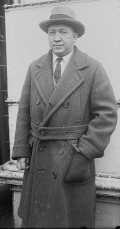
Coach Knute Rockne
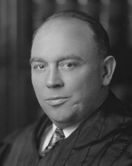 Carnegie Tech
Carnegie Tech Coach Walter Steffen
|
Only one team stood in the way of an undefeated season and a possible trip to the Rose Bowl: the Carnegie Tech Tartans at Forbes Field in Pittsburgh. With no assurance that the Pasadena bid would come through or that the university would allow the team to accept it, Notre Dame's seniors had to play the game as if it were their last for the Blue and Gold.
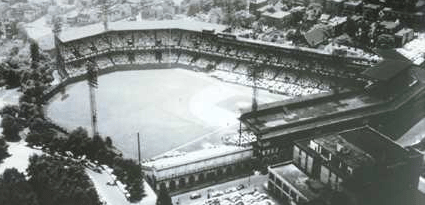 Forbes Field
- Rockne saw no need to change his substitution plan that had produced eight victories in eight games. At first, the backups dominated but had two field goal tries blocked. Toward the end of the period, the tide suddenly turned when Kristoff of Tech blocked Edwards' punt, grabbed the ball, and rumbled 45y to the Promised Land. Bastian's kick failed to go through the uprights. Rockne then waved in the Horseman/Mules to the delight of the many Irish partisans in the crowd of 35,000.
- As at Northwestern, Stuhldreher called for passes to move the ball against an opponent geared to stop the run. Crowley shot a 25y aerial to Miller who ran the remaining 15y to the end zone. Crowley kicked the point for a 7-6 lead. Then came two touchdowns in quick succession, one for each team. Notre Dame again advanced through the air to set up Cerney's touchdown plunge. This time, Crowley missed the goal. With less than two minutes to go in the half, Carnegie recovered Miller's fumble on the Notre Dame 37. After two plays were stuffed, FB Dwight "Dike" Beede took the snap, bluffed a pass to one side to draw the defenders, then turned his back for a moment before wheeling around and running to the other side where his interference outnumbered the defenders. He sneaked into the corner of the end zone. Captain Newman booted the tying 13th point. Tech coach Walter Steffen had to leave the field immensely pleased.
- Notre Dame wasted no time in regaining the lead for good. Starting from its 27 after receiving the kickoff, "the western team" gained nothing in two tries before Stuhldreher hurled a pass to Livergood, replacing Layden who was hurt in the first half. Bernie made a neat catch and scampered into the end zone. Crowley's kick made the score 20-13. Coach Steffen then made a decision that astounds us today but drew no comment from writers at the time. He chose to kickoff. (So much for controlling the ball and keeping it away from the most potent offense in the land.) The visitors started right where they left off on the previous drive. Stuhldreher shot a pass to Miller for an apparent score. However, an offside penalty brought it back. So Harry threw to Crowley to re-tally 6. Sleepy Jim's kick was true.
- As the final period began, Notre Dame had possession 35y from another touchdown thanks to Carnegie kicking off again. "Instead of forward passing, QB Stuhldreher, who played a bang-up game all afternoon, elected to play straight football." Miller and Crowley advanced the pigskin to the 5. Livergood plunged over from there. Again, Crowley converted to make it 34-13. You're not going to believe this, but "Carnegie Tech elected to kick off" as one report, by Walter Eckersall, former great player at Chicago and one of the officials in the game, stated matter-of-factly. Connell and Crowe of the second unit moved the ball into position for Stuhldreher to call his own number for the touchdown. At this point, "Rockne made wholesale substitutions and the large crowd commented freely on the easy manner in which the substitutes fitted into the well oiled machine." As preposterous as it sounds, Notre Dame again received the kickoff. This time Steffen's "strategy" (if it can be called that) paid off with a fumble recovery at the 28. Two double pass plays carried to the oval to the 9. After an offside penalty against the offense, Beede repeated the same trick play he had pulled in Q2 to make the final score a more respectable 40-19.
- Notre Dame completed 15 of 18 passes, including 12 in a row at one point. These unheard of figures astounded sportswriters, who searched for superlatives to praise Rockne's leviathan.
|
Dwight Beede, who scored two of Carnegie Tech's touchdowns, become a highly successful coach at Youngstown State. He came from his alma mater to found the YSU program in 1938 and continued until 1972. He was elected to the College Football Hall of Fame in 1966.
He will always be remembered as the inventor of the penalty flag, which he introduced as an experiment in 1941. |
|
|
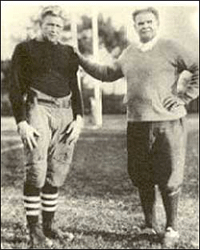
Ernie Nevers and Coach Glenn "Pop" Warner |
Having finished 9-0 and universally acclaimed as clearly the nation's best team, all Notre Dame could do was await the hoped-for Rose Bowl invitation.
Nationwide football polls were over a decade away. The Associated Press poll did not start until 1936.
The two greatest football coaching systems in the United States will clash when Stanford and Notre Dame meet in the Rose Bowl at Pasadena New Year's Day. POWER - the grinding, crushing, irresistible offensive of "Pop" Warner's team will be pitted against the SPEED and PRECISION required in the famous Notre Dame shift of Knute Rockne.
The contest should bring out some of the best football ever seen on the Pacific Coast. Although the colorful Catholic aggregation relies mainly on speed, it is by no means without punch. On the other hand, that the Cards do not have to bank entirely on straight football to gain ground was proved in the California-Stanford game when Warner's team scored two touchdowns in the last five minutes of play on forward passes. ...
Neither team has been defeated and the winner will have a strong claim on the football championship of the United States. Stanford's chances to take the South Benders into camp will depend largely on whether or not Ernie Nevers and Norman Cleaveland will be able to play. The former was kept out of the Big Game with a cracked ankle bone and Cleaveland was declared ineligible. Nevers' physician says that the big fullback will be in shape to perform and investigation may prove Cleaveland eligible.
- This write-up was typical of many that would follow in the weeks leading up to the game. It focused more on the coaches than the players. Warner had just completed his first season at Stanford after nine years at Pittsburgh and, most famously, eight years before that at Carlisle Indian School where he taught Jim Thorpe to play football.
- Many Notre Dame partisans were upset when they learned of the financial arrangement for the game. The two teams would split 60% of the gate receipts equally. Rockne's supporters considered that unfair because his team was clearly the drawing card. If the coach himself were bothered by the contract, he would use the supposed inequity to motivate his men.
The game in Pasadena was the only "bowl game" as the term came to be used through the decades. However, several post-season games were scheduled as the regular season drew to a close.
- On Christmas Day, USC hosted Missouri.
- On New Year's, Pennsylvania played California at Berkeley.
- Also on January 1, West Virginia Wesleyan visited SMU in Dallas as part of the Texas State Fair. The Mustangs, unbeaten the last two seasons, scheduled the game as the opening step in a fund-raising campaign to raise $1,000,000 to build a gymnasium on campus.
Rockne decided to make Notre Dame's first trip to the West Coast a cross-country tour akin to the barnstorming baseball series that brought the stars to the people in that pre-television age.
- The Notre Dame contingent left South Bend by train a week before the game and traveled to New Orleans, a city with a large Catholic population. Rock put his charges through a vigorous workout that was open to the local folks.
- The train then headed to Houston, where a local school had proposed that the team play an exhibition game. However, the faculty, sensitive to the charge that the school overemphasized football, nixed the idea. So Rockne limited the stopover to a practice session open to the public.
- The cavalcade continued to Tucson AZ for four days of practice in weather similar to sunny California's. Skip Madigan, a teammate of the immortal George Gipp, traveled from St. Mary's College in California to give his former coach a scouting report on Pop Warner's offense. Madigan's report focused on the all-around talents of Nevers, including a screen pass to Ernie that often caught defenses off-guard.
- On New Year's Eve, the entourage rolled into Los Angeles, where thousands of admirers awaited. Rock kept the team under wraps that night to focus on the task at hand. Party after victory was achieved.
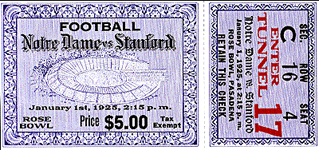 |
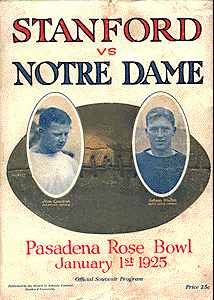

Ted Shipkey
|
53,000 fans, paying close to $200,000 for tickets, gathered on the hot (90+°) afternoon of January 1 for the much-anticipated matchup. The game was broadcast by Westinghouse on all the stations of its radio network, centered at KDKA in Pittsburgh and including a Chicago station.
Nevers, who had broken both ankles during the season, started and played most of the game. On the other side, Layden showed no ill effects from the injury that knocked him out of the Carnegie Tech game. In fact, Elmer would be Notre Dame's MVP.
- Following the policy of "If it ain't broke, don't fix it," Rockne started the second string. Stanford took the opening kick and ripped off three first downs before bogging down in Notre Dame territory. Murray Cuddeback's place-kick attempt from the 46 missed, but he would soon get a chance to redeem himself. With Notre Dame taking over on its 20, Rockne inserted the "Four Horsemen and their seven corporals." Stuhldreher fumbled on the very first play, and Stanford recovered on the 15. Three plays gained only 5y; so Cuddeback booted a 27y field goal. Now Rockne did what the Wisconsin and Carnegie Tech coaches had done - choose to kickoff. A piling on penalty on the runback gave the Cardinals good field position on their own 39. But with half-a-yard to go on fourth down, Stanford chose to punt, Cuddeback's boot going over the goal.
- Even with a month of practice, no team could adequately prepare for the confusing, lightning-quick Rockne offense. "Every play was something new and the combination of deceptive shift, hidden ball, effective interference and magnificent individual running was something that probably no team in the country could have solved at first sight," Stanford's Bill Henry told the Los Angeles Times after the game. Starting at its 20, Notre Dame marched relentlessly into Stanford territory. The big plays were Crowley's 20y scamper around right end and plunge over left tackle for 15, and Notre Dame's first pass of the game, from Stuhldreher to Miller to the 21. Two plays later, Miller carried around left end to the nine. But after a timeout, the defense stiffened. On fourth and goal from the 11, Ted Shipkey broke through and hurried Harry's pass, which fell far from any receiver. After the play, "a doctor was called to bandage Stuhldreher's injured ankle. Cardinal boosters noted with satisfaction that Ernie Nevers' ankles
were holding out and going strong." The Notre Dame quarterback remained on the field when play resumed.
The Four Horsemen behind three of the "Seven Mules." Captain Adam Walsh at center; John Weibel LG; RG Noble Kizer |
|
|
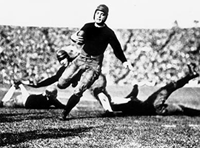
1925 Rose Bowl Action (Layden scoring first touchdown?)

Jim Lawson
|
- Nevers ran from punt formation, but Weibel nailed him for a 3y loss. So Warner followed the common strategy of the day and ordered Cuddeback to punt out, the boot traveling only to the 32. On second down, Sleepy Jim gained 13 over T. On third down, Layden smashed up the middle to the 10. On fourth down, Layden dove headlong to the seven for first-and-goal as the opening period ended.
- During the changeover, "Referee Ed Thorpe forced Capt. Jim Lawson to remove the steel brace from his knee." Crowley twisted through right tackle to the three. On the next play, Layden dove through left guard to paydirt. Crowley's PAT kick was blocked by Johnston "with his brawny chest." Notre Dame led 6-3. No one suspected at the time that this would be the only offensive touchdown of the day for Rockne's machine.
- Warner now returned Rockne's earlier favor and elected to kickoff. The strategy paid off as the Cardinals forced a three-and-out and took over on its 20 after Layden's booming punt rolled into the end zone. Two plays netted 20. Three plays later Lawson gained 16 to the Notre Dame 39. On 4th-and-4, Layden stepped in front of a Nevers pass at the 30 and, after batting and juggling the ball, carried it down the sidelines to the end zone. Crowley converted to make 14-3.
- Stanford again kicked off and forced a punt after three plays, during which LT Joe Bach left the fierce battle because of bruised ribs. He was replaced by John McMullan (6-0 204), who would play an important role in the contest. Fred Solomon ran back Stuhldreher's punt 15y to the midfield stripe. But the good field position led nowhere because two plays later Stuhldreher intercepted Nevers on the 38. Harry showed Ernie how to do it, hitting Crowley for 30, but on fourth down, Stuhldreher's pass fell incomplete. Stanford took over on its 30. Not gun shy after two interceptions, the Cardinals started passing their way down the field. After several first downs, Nevers shot a pass to Solomon who dashed to the 10. But LHB Kelly fumbled, and Walsh covered it on the 15 to end the threat as the half ended.
The heat and bruising play were taking their toll on both teams but especially the lighter boys from the midwest. "I was quite worried between halves as my men seemed all tuckered out," Rockne told the Los Angeles Times after the game. "And they frankly told me that they didn't think they could last the second half." His season-long strategy of playing two and even three strings would come in handy in the second half.
- Notre Dame punted on its first possession, and Stanford started a march from its 24, even overcoming a 15y penalty. Cuddeback passed to Shipkey who ran to the Notre Dame 25. On 4th-and-10 Cuddeback's place-kick from the 31 sailed wide.
- Layden punted on third down to set up Stanford in good shape again at midfield. Nevers hit Solomon to the 33. But Walsh and company held, forcing still another errant field goal from Cuddeback. Stanford again forced a punt but lost the momentum with another mistake. Solomon fumbled Layden's boot on his 20. Huntsinger "shoved Solomon away from the ball, scooped it up and ran across a clear field for a touchdown." Crowley's goal made it 20-3.
- Down 17, Warner again chose to kickoff. Considering how his defense had dominated Rockne's offense, this was a sage move, and it paid off in spades. Nevers intercepted Stuhldreher's 3rd-down pass on the 20. Three runs up the middle by Big Ernie gained a first at the 10. He pounded out three more, then another three. Two more made it fourth-and-goal at the two. Stanford chose that moment to pass, Ed Walker tossing to Shipkey in the end zone. Cuddeback's PAT made it 20-10. Take away the fumble return for a touchdown, and Stanford had dominated the period, which ended several plays later without a Notre Dame first down.
- On the second play of the fourth quarter, Baker intercepted Crowley's pass and returned it to the 34. The PCC champs plowed ahead to a first down on the six. Nevers rammed through the middle to the three, but Walker failed to gain at right tackle. At that point, Rockne sent T McMullan into the game. Since, by rule, he couldn't communicate any sideline instructions until after the play, he contented himself with stopping Ernie at the one. Stuhldreher then asked him what message coach had for his beleaguered troops. "Rock said to hold 'em." And that's what they did. On fourth down, Nevers tried McMullen's spot again but fell short by a mere 8".
- Layden boomed a punt from the end zone into enemy territory, Solomon returning to the 36. Crowley snagged Walker's long pass but came down out of bounds. Nevers passed to Shipkey for nine, then gained four more through left guard. Two plays later, Nevers broke loose up the middle to the 35. On the next play, Crowley got his interception on the 10. But the Horsemen were again unable to gain a first down. This time Layden punted only to the 37.
- Needing two scores with time running out, Stanford took to the air. After an incompletion, Nevers threw another interception. In a rerun of a first half play, Layden returned it 65y to paydirt. Crowley converted. The scoreboad read Notre Dame 27, Stanford 10 with less than a minute to play.
- After Layden's second interception return, Rockne removed him from the game. When Elmer reached the sidelines, he was crying. "Why are you crying?" Rockne asked. "You just put the game on ice." "I know why you're taking me out. You saw it!" sobbed Layden. "Saw what?" "I thought you saw me carry the ball in the wrong arm on that play," Layden replied.
Stanford won the statistical battle in most categories. But one important tally went Notre Dame's way and determined the victor.
- 164y of offense to 134 for Notre Dame.
- 17 first downs to Notre Dame's seven, all in the first half.
- Notre Dame only 3-7/48y passing compared to 12-17/146y for the Cardinal.
- Stanford had SIX turnovers–four interceptions and two fumbles. Notre Dame threw two interceptions and lost one fumble.
Newspapers across the land blared headlines like the one in the Alton (IL) Evening Telegraph: "NOTRE DAME BEATS STANFORD, WINS FOOTBALL TITLE."
While in Los Angeles, Rockne met with USC officials about their head coach/AD position. In mid-January, details of the negotiations leaked to the Los Angeles press putting Knute in an embarrassing position. Father Walsh reminded him he had signed a 10-year contract and would be subject to legal action were he to try to abrogate it.
In the spring, the Notre Dame Board of Directors decided it didn't like the charges of commercialism and use of the football team to make money in the wake of the Rose Bowl victory. Rockne's ostentatious weeklong trip to California didn't sit well with some board members either. So the university adopted a policy of declining all offers for post-season play, a stance that stayed in effect until 1969. The Big Ten schools, which Notre Dame tried to emulate, had adopted such a policy at the beginning of the decade. Furthermore, the Carnegie Foundation decried the prominence of football on college campuses and urged the abolition of post-season play.
The $52,000 Notre Dame earned from the Pasadena classic built the Dillon Hall dormitory on campus. The school has never played in another Rose Bowl game.
|
Postscript
When Notre Dame played Stanford in 1963 for the first time since the 1925 Rose Bowl, the Four Horsemen traveled to California for a commemorative photo with three Fighting Irish linemen.
Stuhldreher is under center although he never played in the T-formation. Behind him are (L-R) Miller, Layden, and Crowley.
Top of Page
|
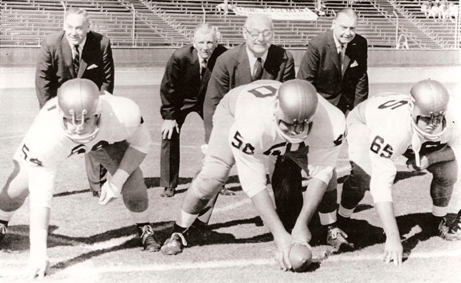 |
|
CONTENTS
Games 1 and 2
Game 3
Games 4 and 5
Games 6 and 7
Games 8 and 9
Rose Bowl
Other Seasons in Time
Providence Steamroller 1928
Stanford 1940
Wisconsin Badgers 1942
LSU
1958
Alabama 1966
Football Magazine
Golden Rankings Home
|














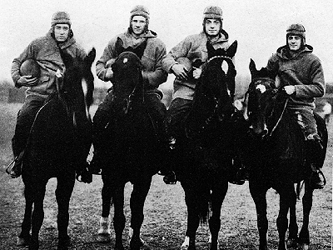




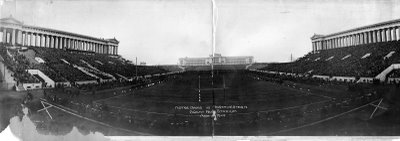


 Forbes Field
Forbes Field

